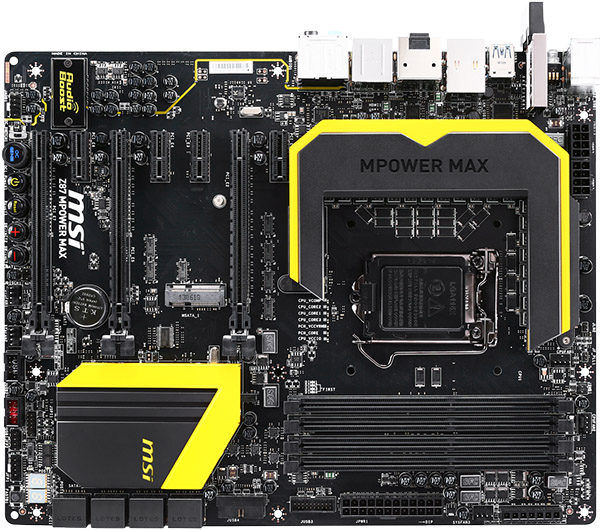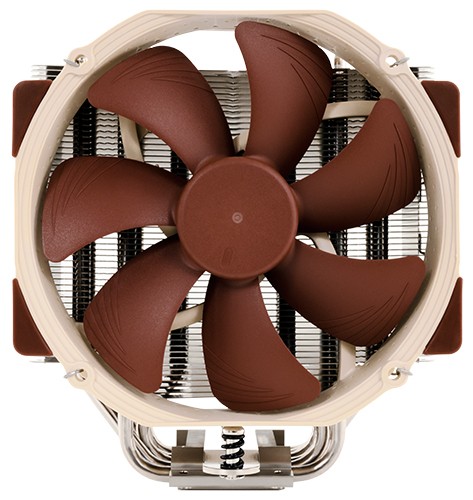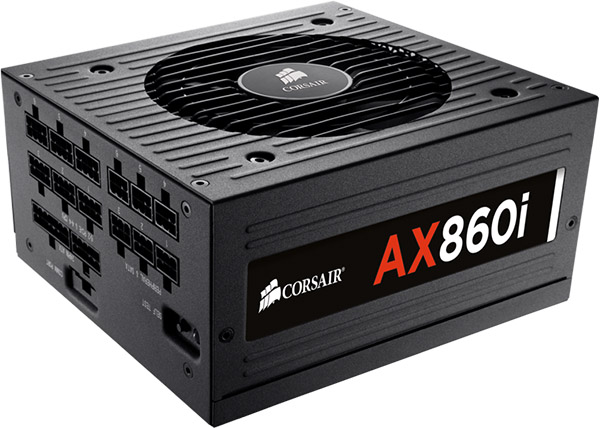The Core i7-4770K Review: Haswell Is Faster; Desktop Enthusiasts Yawn
Intel's Haswell architecture is finally available in the flagship Core i7-4770K processor. Designed to drop into an LGA 1150 interface, does this new quad-core CPU warrant a complete platform replacement, or is your older Sandy Bridge-E system better?
Test Setup And Benchmarks
| Test Hardware | |
|---|---|
| Processors | Intel Core i7-4770K (Haswell) 3.5 GHz (35 * 100 MHz), LGA 1150, 8 MB Shared L3, Hyper-Threading enabled, Turbo Boost enabled, Power-savings enabled |
| Row 1 - Cell 0 | Intel Core i7-3770K (Ivy Bridge) 3.5 GHz (35 * 100 MHz), LGA 1155, 8 MB Shared L3, Hyper-Threading enabled, Turbo Boost enabled, Power-savings enabled |
| Row 2 - Cell 0 | Intel Core i7-2700K (Sandy Bridge) 3.5 GHz (35 * 100 MHz), LGA 1155, 8 MB Shared L3, Hyper-Threading enabled, Turbo Boost enabled, Power-savings enabled |
| Row 3 - Cell 0 | Intel Core i7-3930K (Sandy Bridge-E) 3.2 GHz (32 * 100 MHz), LGA 2011, 12 MB Shared L3, Hyper-Threading enabled, Turbo Boost enabled, Power-savings enabled |
| Row 4 - Cell 0 | AMD FX-8350 (Vishera) 4.0 GHz (20 * 200 MHz), Socket AM3+, 8 MB Shared L3, Turbo Core enabled, Power-savings enabled |
| Row 5 - Cell 0 | AMD A10-5800K (Trinity) 3.8 GHz (19 * 200 MHz), Socket FM2, 4 MB Total L2 Cache, Turbo Core enabled, Power-savings enabled |
| Motherboard | MSI Z87 Mpower Max (LGA 1150) Intel Z87 Express, BIOS 1.2B1 |
| Row 7 - Cell 0 | MSI Z77 Mpower (LGA 1155) Intel Z77 Express, BIOS 17.8 |
| Row 8 - Cell 0 | MSI X79A-GD45 Plus (LGA 2011) Intel X79 Express, BIOS 17.2 |
| Row 9 - Cell 0 | MSI 990FXA-GD80 (Socket AM3+) AMD 990FX/SB950, BIOS 13.2 |
| Row 10 - Cell 0 | MSI FM2-A85XA-G65 (Socket FM2) AMD A85X, BIOS 2.0 |
| Memory | G.Skill 16 GB (4 x 4 GB) DDR3-1600, F3-12800CL9Q2-32GBZL @ DDR3-1600 at 1.5 V |
| Hard Drive | Samsung 840 Pro 256 GB, SATA 6 Gb/s |
| Graphics | Nvidia GeForce GTX Titan 6 GB |
| Power Supply | Corsair AX860i, 80 PLUS Platinum, 860 W |
| System Software And Drivers | |
| Operating System | Windows 8 Professional x64 |
| DirectX | DirectX 11 |
| Graphics Driver | Nvidia GeForce Release 320.18 |
As we were planning out our test platforms, MSI responded to a call for vendor consistency across the motherboards we wanted to use. The company sent us one board for each of the processor interfaces we planned to compare, making it easy to tune each firmware exactly the same way. In this case, we wanted all power-saving features turned on and all automatic overclocking capabilities turned off (including settings that pushed all cores to the maximum Turbo Boost setting).
The first platform we set up centered on the 990FXA-GD80 board and FX-8350 processor. Four 4 GB DDR3-1600 memory modules from G.Skill populated the motherboard's slots, while a Samsung 840 Pro attached to its first SATA 6Gb/s port.
Next, we configured MSI's FM2-A85XA-G65 using the same drive image, complementing the platform with AMD's highest-end A10-5800K APU. While a number of our earlier benchmarks exploited the chip's on-die Radeon HD 7660D, everything from here on out leverages an Nvidia GeForce GTX Titan.
With the AMD testing out of the way, we were able to start configuring Intel-based systems. We started with the Z87 Mpower Max, which glows yellow up top and white underneath. To be quite honest, I haven't been so impressed with an MSI motherboard in a long time. The company appears to have really stepped up its game for the 8-series generation.
The Z77 Mpower board serves our LGA 1155 needs, hosting Intel's Core i7-3770K and -2700K, yielding comparisons to two prior-generation architectures.
I want to point out something MSI did for us leading into this launch. Like pretty much every motherboard vendor out there, it has a setting in its BIOS called Enhanced Turbo. This sets all four cores to operate at the processor's maximum single-core Turbo Boost ratio as a sort of sneaky overclock. At our request, MSI turned this off by default with its 8-series boards so that Haswell-based CPUs operate according to Intel's specification.
We had to turn this quiet "cheat" off manually on the Z77 Mpower and Z79A-GD45 Plus, below. However, we appreciated that MSI was willing to get back to Intel's spec for this generation. We prefer control over this, and to not have it be a default setting.
Get Tom's Hardware's best news and in-depth reviews, straight to your inbox.
Finally, theX79A-GD45 Plus hosted our venerable Core i7-3930K processor. Old though it might be, this is still one of our favorite CPUs around. And as you'll see, the old timer has no trouble beating Haswell down in threaded apps able to exploit its six cores.
Noctua sent over its LGA 1150-compatible NH-U14S to help with testing, too. We used an NF-F12 fan to blow over our memory modules. This seemed to help put a stop to the errors we were getting in our long, taxing Visual Studio compile workload.
Corsair also sent over some hardware for us to use. We leaned on its AX860i power supply for its promised compatibility with Haswell's low-power states. We also used its CMY16GX3M2A2400C10R memory kit for our overclocking efforts.
| Benchmark Configuration | |
|---|---|
| 3D Games | |
| Battlefield 3 | Campaign Mode, "Going Hunting" 90-Second Fraps, Low-Quality Preset, 1280x720 and 1920x1080 |
| BioShock Infinite | Built-in Benchmark Utility, Fraps, Low-Quality Preset, 1280x720 and 1920x1080 |
| Hitman: Absolution | Built-in Benchmark Utility, Fraps, Lowest-Quality Preset, 1280x720 and 1920x1080 |
| The Elder Scrolls V: Skyrim | Update 1.5.26, Celedon Aethirborn Level 6, 25-Second Fraps, Medium-Quality Preset, 1280x720 and 1920x1080 |
| World of Warcraft: Mists of Pandaria | Flight Point Benchmark, Fraps, Good Quality Preset, 1280x720 and 1920x1080 |
| Adobe Creative Suite | |
| Adobe After Effects CS6 | Version 11.0.0.378 x64: Create Video which includes three Streams, 210 Frames, Render Multiple Frames Simultaneosly |
| Adobe Photoshop CS6 | Version 13 x64: Filter 15.7 MB TIF Image: Radial Blur, Shape Blur, Median, Polar Coordinates |
| Adobe Premeire Pro CS6 | Version 6.0.0.0, 6.61 GB MXF Project to H.264 to H.264 Blu-ray, Output 1920x1080, Maximum Quality |
| Audio/Video Encoding | |
| iTunes | Version 10.4.1.10 x64: Audio CD (Terminator II SE), 53 minutes, default AAC format |
| Lame MP3 | Version 3.98.3: Audio CD "Terminator II SE", 53 min, convert WAV to MP3 audio format, Command: -b 160 --nores (160 Kb/s) |
| HandBrake CLI | Version: 0.98: Video from Canon Eos 7D (1920x1080, 25 FPS) 1 Minutes 22 Seconds Audio: PCM-S16, 48,000 Hz, Two-Channel, to Video: AVC1 Audio: AAC (High Profile) |
| TotalCode Studio 2.5 | Version: 2.5.0.10677: MPEG-2 to H.264, MainConcept H.264/AVC Codec, 28 sec HDTV 1920x1080 (MPEG-2), Audio: MPEG-2 (44.1 kHz, 2 Channel, 16-Bit, 224 Kb/s), Codec: H.264 Pro, Mode: PAL 50i (25 FPS), Profile: H.264 BD HDMV |
| Productivity | |
| ABBYY FineReader | Version 10.0.102.95: Read PDF save to Doc, Source: Political Economy (J. Broadhurst 1842) 111 Pages |
| Adobe Acrobat X | Version 10.0.0.396: Print PDF from 115 Page PowerPoint, 128-bit RC4 Encryption |
| Autodesk 3ds Max 2012 and 2013 | Version 14.0 x64: Space Flyby Mentalray, 248 Frames, 1440x1080 |
| Blender | Version: 2.64a, Cycles Engine, Syntax blender -b thg.blend -f 1, 1920x1080, 8x Anti-Aliasing, Render THG.blend frame 1 |
| Visual Studio 2010 | Version 10.0, Compile Google Chrome, Scripted |
| File Compression | |
| WinZip | Version 17.0 Pro: THG-Workload (1.3 GB) to ZIP, command line switches "-a -ez -p -r" |
| WinRAR | Version 4.2: THG-Workload (1.3 GB) to RAR, command line switches "winrar a -r -m3" |
| 7-Zip | Version 9.28: THG-Workload (1.3 GB) to .7z, command line switches "a -t7z -r -m0=LZMA2 -mx=5" |
| Synthetic Benchmarks and Settings | |
| 3DMark 11 | Version: 1.0.1.0, Benchmark Only |
| PCMark 7 | Version: 1.0.4 x64, System, Productivity, Hard Disk Drive benchmarks |
| SiSoftware Sandra 2013 | Version 2013.01.19.11, CPU Test = CPU Arithmetic / Multimedia / Cryptography / Memory Bandwidth / Cache Bandwidth |
Current page: Test Setup And Benchmarks
Prev Page Overclocking Haswell: You’ll Pay For That Next Page Results: Synthetics-
Danny N Biggest question is if its worth upgrading my cpu i5 750 4.0ghz to Haswell or my gfx card ati 5870 to nvidia 7xx, my main pc use is for Maya, After FX and some fps gaming. Any input would be appriciated cause I'm leaning towards a cpu upgrade atm.Reply -
refillable @Danny NReply
You shouldn't ask here. Perhaps you should get an i7-4770k and a 7970(?) I heard that kepler cards does not perform that good in Maya and Aftereffects (In OpenCL). -
envy14tpe Seriously. What did people expect? Of course it's better but nothing out of the ordinary for Intel.Reply -
enewmen For me it's not about the 10% gain over SB. It's more like a huge gain over a C2Q, floating point performance over SB (should matter later), and lower watts. I hope THG can expand the Power Consumption and Media Encoding later - check the Watts idle more and fast quick-sync media encoding quality loss. My 2 cents..Reply
EDIT:
other sites have reported much lower watts idle, so a lot doesn't make sense or the 4770k has a very slow throttle.
http://hexus.net/tech/reviews/cpu/56005-intel-core-i7-4770k-22nm-haswell/?page=15
http://www.techspot.com/review/679-intel-haswell-core-i7-4770k/page13.html







